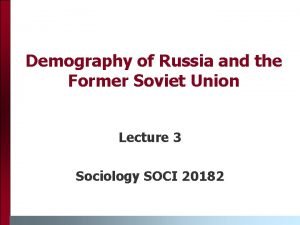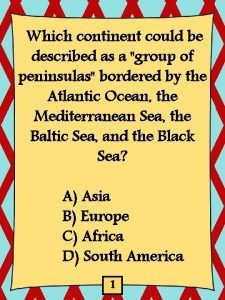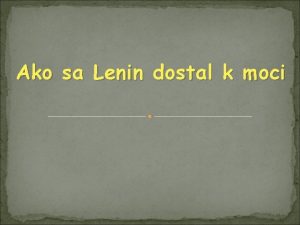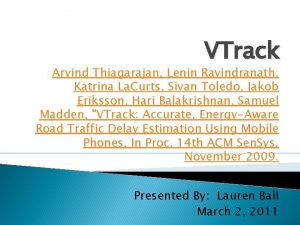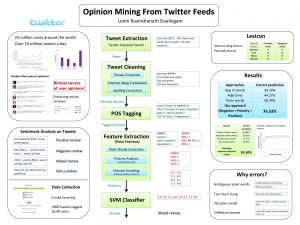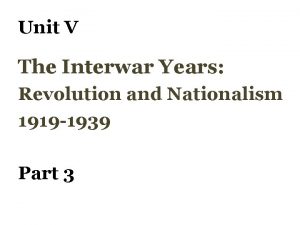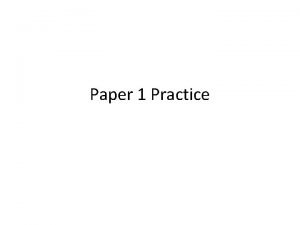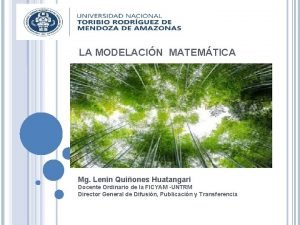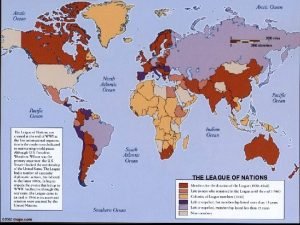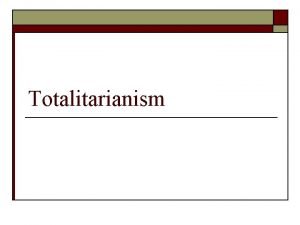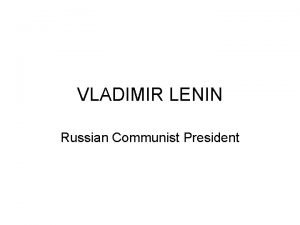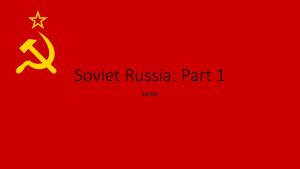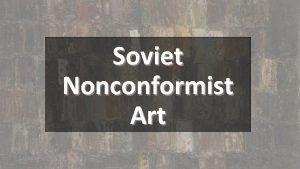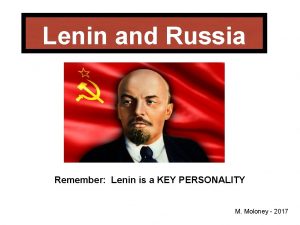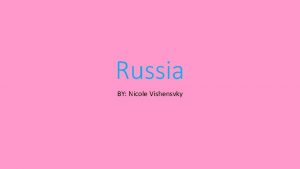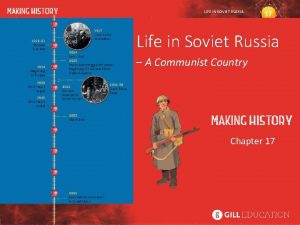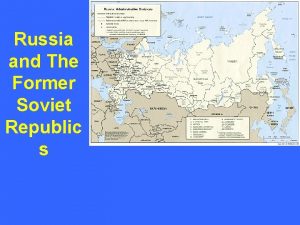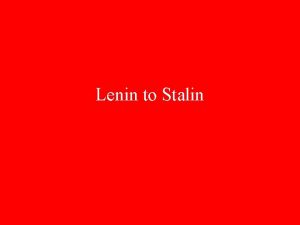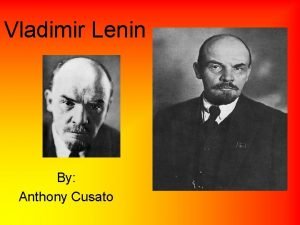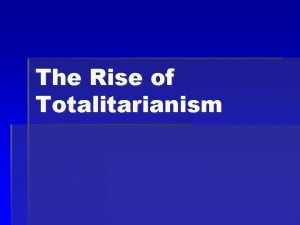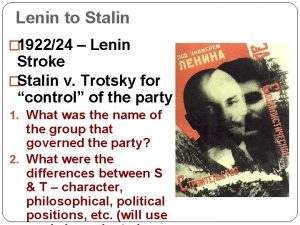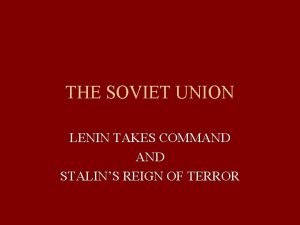Soviet Russia Part 2 Lenin WHO WAS LENIN














- Slides: 14

Soviet Russia: Part 2 Lenin

WHO WAS LENIN? • Youth and early career • Dad was provincial director • Older brother was involved in plot to kill Alexander III • Lenin studied law • Fascinated with Marxism • Published Marxist newspaper “Iskra” (or the Spark)

WHO WAS LENIN? • Leader of Bolsheviks • Social Democratic Party • Lenin and followers called themselves Bolsheviks (radical) and different from moderate Russian Marxist, the Mensheviks. • Believed in elite leaders • Impatient revolutionary (agitator) rather than more patient moderates. • Exiled from 1905 -1917 • Germans smuggled him back into Russia to start uprising

Early Measures of the Bolshevik Regime: Reform Laws • Russian Orthodox was long seen as a reactionary/ conservative tool • Bolsheviks sought to destroy • Church & State separated • Church property seized • Religious instruction prohibited • Only civil marriage allowed • Changed to Gregorian Calendar

Early Measures of the Bolshevik Regime: The Constituent Assembly November Election • Bolsheviks lost to more moderate Socialist Revolutionary Party • 420 -225 Bolsheviks dissolved assembly after 1 session Cheka Organized and Bolshevik dictatorship created

Early Measures of the Bolshevik Regime: The Treaty of Brest-Litovsk

The Civil War • November Revolution caught the moderates off guard • By Spring of 1918, their efforts to topple Lenin began

The Civil War • Reds vs. Whites • Leon Trotsky- Red Army • Whites- Anti-Communists • Divided between liberalism and socialism • Many feared White victory would bring back old order

The Civil War • Allied Intervention • French, British and American troops were sent to prevent Germans from gaining raw materials (Archangel Expedition) • Japanese helped in the east • Allies didn’t really fully commit to white forces to overthrow Lenin • Soviets still never forgot these western invasions and interference

The Civil War • Soviet Territorial Losses • In the West, Finland the Baltic states of Estonia, Latvia and Lithuania gained independence, while Rumania seized the province of Bessarabia • Independence movements failed, however, in the Ukraine and in Georgia and Armenia in the Caucasus. In 1920, Poland invaded Russia.

The Civil War • Soviet Territorial Losses • Poland Marshal Jozef Pilsudski desired to retake land lost to Russia during Polish Partitions • Polish invaded Ukraine and took Kiev • Soviet counteroffensive reached Warsaw, but was stopped • Both sides concluded an armistice by October that place Poland’s border east of the Curzon Line

The Civil War • War Communism • program that centered on forced grain seizures and class war between the “Kulaks” (ill-defined middle class peasants) and others. • Nationalization of companies and industries • Private trade prohibited • Requisitioned food from peasants to feed the cities

The Civil War • The Kronstadt Rebellion • March 1, 1021, rebellion broke out at naval base near Petrograd • Trotsky and Red Army put down rebellion

The New Economic Policy • NEP- Partial restoration of capitalism • State retained ownership of large industries, transportation and trade • Small industry were turned back over to private operators.
 Meanwhile in soviet russia
Meanwhile in soviet russia Population pyramid russia
Population pyramid russia Which number on the map represents the english channel?
Which number on the map represents the english channel? Os 10 mandamentos de lenin
Os 10 mandamentos de lenin Vladimir lenin grandson
Vladimir lenin grandson Ako sa lenin dostal k moci
Ako sa lenin dostal k moci Arvind thiagarajan mit
Arvind thiagarajan mit Lenin ravindranath sivalingam
Lenin ravindranath sivalingam Lenin was the leader of _____party
Lenin was the leader of _____party Was lenin a hero
Was lenin a hero Lenin genocide
Lenin genocide Ufaj ale sprawdzaj lenin
Ufaj ale sprawdzaj lenin Lenin quiñones huatangari
Lenin quiñones huatangari Comrade lenin sweeps the globe clean
Comrade lenin sweeps the globe clean Lenin
Lenin

